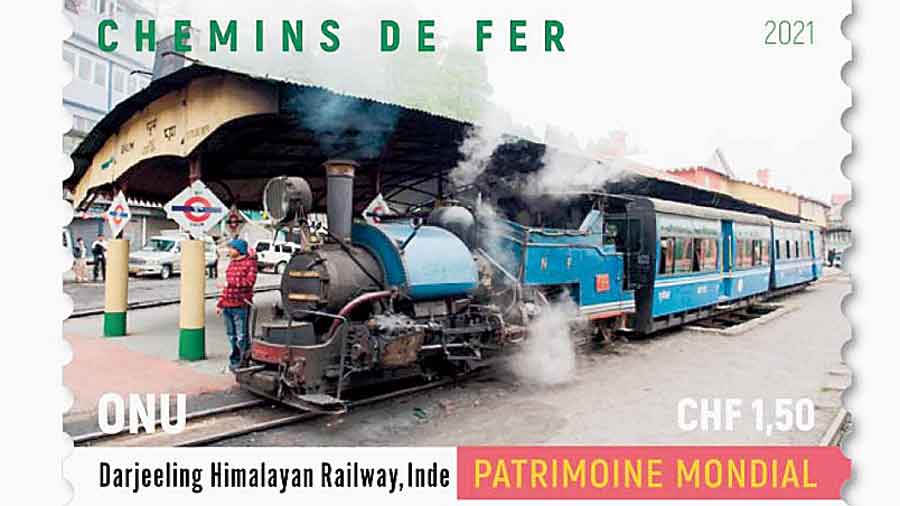The United Nations (UN) on Wednesday issued a commemorative postage stamp on the Darjeeling Himalayan Railway (DHR) simultaneously from the UN offices in New York, Geneva and Vienna, underlining the importance of preserving world heritage sites at a time the Narendra Modi government is looking at monetising it.
This is the first time that the DHR has been featured since the UN first issued a stamp in 1951. “The DHR had the rare distinction of being featured as one of the six stamps,” said Udaya Mani Pradhan, a philatelist from Darjeeling nominated by India Post as an honorary member of Calcutta Philatelic Club.
Along with the DHR, the UN has recognised the Rideau Canal (Canada), the Grand Canal (China), the Rhaetian Railway in the Albula/ Bernina Landscapes (Switzerland/ Italy), the Forth Bridge (Scotland) and the Old Bridge Area of the Old City of Mostar (Bosnia and Herzegovina).
“The DHR stamp is valued at 1.50 Swiss Franc with the words Chemins de fer, French for railways and literally means iron path,” said Pradhan.
The UN has said the Mountain Railways of India has three units; the DHR and the railways of Nilgiri and Kalka-Shimla. “They are still fully operational as living examples of the engineering enterprise of the late 19th and early 20th centuries,” the UN said.
In 1999, DHR was inscribed in the world heritage list by Unesco. The hill railway system has also been the subject of stamps of three countries.
“The DHR has been the subject of stamps issued by Gambia, Tuvalu and by the neighbouring country of Bhutan,” said Pradhan, adding that the Indian government had also featured the DHR on postage stamps on two occasions, in 1982 and again in 1993.
“In 1976, the Batasia Loop featured on the first day cover on assets of the Indian Railway,” said Pradhan.
Given the DHR’s international recognition and importance, the Centre’s suggestion that mountain railways in the hills “may be” monetised has come as a major surprise as heritage structures have to maintain most of its original characters or else may lose that status.
Railway enthusiasts argue maintaining heritage status would be difficult if the mountain railway is leased out to a private group.
“Everything concerning the DHR, from railway stations to workshops, is part of heritage. Private players obviously will go after profits instead of investing in maintaining the heritage structures. Many changes (for modernisation) cannot be brought in world heritage sites,” said a DHR enthusiast. “One has to bear in mind that the status might be removed if Unesco feels the site has lost its originality.”
In another development, the regular toy train service resumed from New Jalpaiguri to Darjeeling on Wednesday after a gap of one-and-a-half years.
A diesel loco ascended to hills from New Jalpaiguri with passengers in a vistadome coach, a first class coach and a parcel van.
Senior railway officials, who flagged off the train from New Jalpaiguri, said a number of initiatives have been taken to increase passengers and popularity of the heritage train.
“We will introduce the Jungle-Tea-Safari by toy train from August 30. Apart from that, the parcel carriage was also added in toy trains for the first time in the past 30 years,” said Subhendu Kumar Choudhary, the divisional railway manager of the Katihar division of Northeast Frontier Railway (NFR).
NFR sources said the safari is a two-hour journey. A steam loco will haul a vistadome coach from Siliguri Junction to Rongtong every day at 4pm and return. Passengers can enjoy refreshments at the dining car of the train. “During lean seasons (January-February and July to September), passengers can enjoy a 20 per cent discount in ticket prices of all rides, including joy rides, in toy trains,” said a source.
The parcel van, with the capacity to carry five tonnes of goods, can be booked for Rs 5,000.
Additional reporting by Bireswar Banerjee in Siliguri











